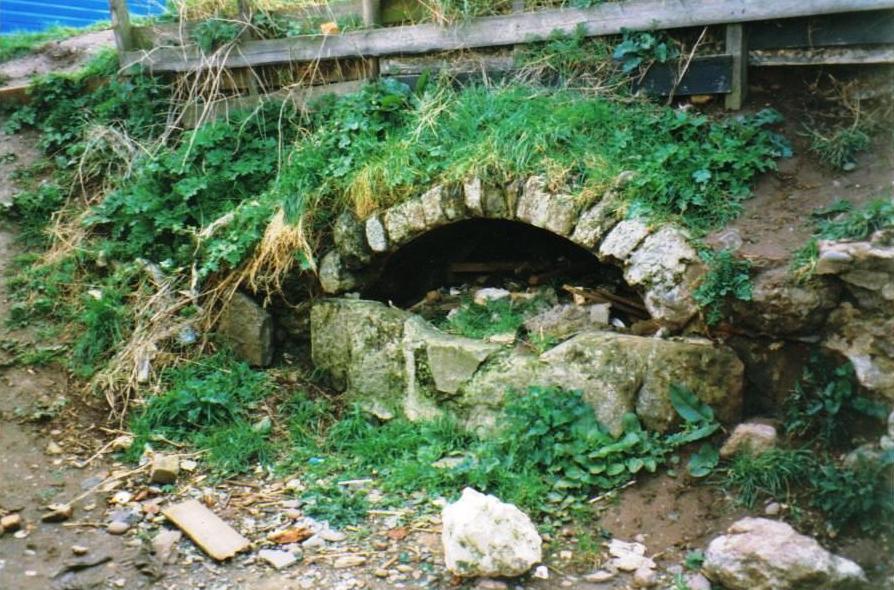Contributory members are able to log private notes and comments about each site
Sites Anne T has logged on trip number: 101 (View all trips)
View this log as a table or view the most recent logs from everyone
Wellbraes
Trip No.101 Entry No.1 Date Added: 30th Sep 2018
Site Type: Holy Well or Sacred Spring
Country: Scotland (Scottish Borders)
Visited: Yes on 29th Sep 2018. My rating: Condition 3 Ambience 2 Access 4

wellbraes submitted by mafenty on 19th Aug 2006. Well from which Wellbraes, Eyemouth derives its name (hidden since 1974 behind the swimming pool) picture taken at that time. Age uncertain ... allegedly "Roman".
grid ref NT944645
(View photo, vote or add a comment)
Log Text: Eyemouth Leisure Centre Well, Wellbraes: This well can only be accessed through the Leisure Centre. Having walked round the Leisure Centre and surrounding buildings, I had to ask at the reception desk, and show a photo of the well. The receptionist didn’t know but one of the personal trainers did, and let us through the fire exit door in the gym; there is a gate at the western end of the centre which leads through into a small garden area; alternatively there is the fire exit through the back of the small gym which leads into the same area.
We could barely recognise the well at first as it was so overgrown with nettles and weeds. Our eyes eventually spotted the arch of stones through the mass of weeds and we trod down a few of the large nettles and dock leaves to take a closer look. The well chamber goes back at least 2m, if not further; whilst there is a wall at the back, this doesn’t seem to be connected to the arched concrete covering over the well basin. We needed better torches to see the back wall of the well, which was partly obscured by a large pile of rubble (bricks and stone) at the back of the chamber.
We could hear water flowing through the well chamber, although there was only a puddle in the bottom. At the left hand side of the well was a very rusty water pipe, but this was dry. Investigating further, we found the water flowing into a low concrete construction at the back of the lip of the well; from there, the water came out of the well chamber through a small rectangular hole and disappeared into a small drain.
With the amount of rubbish around, I didn’t check the quality and taste of the water.
Cockburnspath Cross
Trip No.101 Entry No.3 Date Added: 2nd Oct 2018
Site Type: Ancient Cross
Country: Scotland (Scottish Borders)
Visited: Yes on 29th Sep 2018. My rating: Condition 3 Ambience 3 Access 5

Cockburnspath Cross submitted by Anne T on 2nd Oct 2018. The cross, looking south west down Hoprigg Street.
(View photo, vote or add a comment)
Log Text: Cockburnspath Mercat Cross: Before coming to Cockburnspath, we'd visited the really beautiful Cove, with its smuggler's caves. We'd had to park in the village and follow the single track road running along the top of the cliffs to an old mine tunnel which formed a fun, but very dark, shortcut through to the cove. The bedding planes in the rocks here were fantastic - no wonder James Hutton found the solution to his unconformities only a few miles down the coast. The harbour looks like it might have come straight off an 18th century film set, and there was also a sea arch with a large, round hole in it. Brilliant.
By the time we got to Cockburnspath, only a few miles away, the light was starting to fade rapidly. Parking outside the post office (to avoid the car starring in more of my photographs!), I started to photograph the cross, only to find omeone had left a half eaten pack of McDonalds chips on the base of the stone; we ended up moving these and throwing them away in a nearby bin (yeuk). We also had a look at the churchyard, which had old grave stones, but at this time of night, couldn’t get in. The church had particularly heavy stone slabs used to roof it. We later found the same at Dunglass.
The notice on the side of the cross reads: “Cockburnspath. This Cross was erected in 1503 by King James IV of Scotland in celebration of his marriage to Princess Margaret Tudor, to whom he presented the lands of Cockburnspath as a dowry. The Princess was the sister of King Henry VIII of England and this union of the Scots Thistle and the Tudor Rose was to mark the start of a new and lasting peace, only shattered ten years later by the Battle of Flodden in 1513. / The Cross was repaired with the help of the Regional Council, but mostly by the loyal generosity of the people of this village.”
After seeing this cross, we hopped over the border to East Lothian to see Dunglass Collegiate Church, where we arrived to find a wedding in full swing, and needed torches to look round the inside of this ruined church. Definitely not a chance of getting to see the standing stones nearby at this time of the evening.
